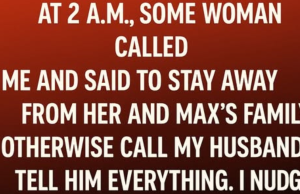
Former U.S. President Donald Trump faced widespread mockery this week after an image of his mobile phone was captured during a public appearance, sparking not only jokes but also serious concerns about his digital security practices.
The incident occurred on Friday night when Trump was seen exiting Air Force One following a visit to a U.S. Steel facility near Pittsburgh.
As he waved to supporters from the steps of the aircraft, he held his phone aloft, inadvertently revealing his lock screen to cameras.
The image displayed on the screen turned out to be a close-up photo of Trump himself, pointing directly at the camera—an unusual choice that quickly fueled online ridicule.
To add to the spectacle, what looked like a message from longtime associate Roger Stone was also visible on the screen, leading many to question the president’s handling of sensitive communications.
Predictably, social media users didn’t hold back, calling Trump self-obsessed and mocking his apparent decision to forgo photos of loved ones in favor of a selfie.

One commenter wrote, “Of course. Trump’s lock screen is a photo of Trump. Not his wife, not his children, not even his grandkids—just him.”
Another added, “The most on-brand thing ever. Laughable but not surprising.”
However, the situation quickly evolved from lighthearted teasing to genuine concern, as cybersecurity experts weighed in on the broader implications.
According to analysts, the real issue isn’t the lock screen image—it’s Trump’s seemingly cavalier approach to technology and communication security.
Reports have long suggested that Trump has a tendency to use unsecured lines and frequently takes calls from unknown numbers.
The Atlantic noted that Trump enjoys the unpredictability of such calls, comparing the experience to “putting a coin in a gumball machine” and waiting to see what flavor appears.
This behavior isn’t new. In 2020, Trump reportedly fell for a prank call from someone impersonating Piers Morgan.
Two years prior, a comedian also managed to trick him by pretending to be Senator Bob Menendez. These incidents have fueled concerns that the former president’s informal habits might expose him—and potentially national interests—to risk.
Additionally, Trump’s intense and often unfiltered presence on social media only adds to the unease.

A recent report highlighted that he published over 2,200 posts on Truth Social within just 132 days—an average of more than 17 posts a day—raising questions about impulse control and information discipline.
For many, the image of Trump proudly displaying a lock screen selfie became symbolic of a much larger problem
A lack of caution in an increasingly dangerous digital world. Critics have called for tighter controls on his access to technology, joking that someone should take his phone away—or at least set some parental controls.
While the viral photo started as fodder for memes and jokes, it has unearthed deeper questions about personal security practices among world leaders, particularly those with access to sensitive or classified information.
In Trump’s case, the combination of a flamboyant personality, a relaxed attitude toward technology, and a vast platform creates a potentially volatile mix.
In summary, what started as an amusing snapshot of a former president’s vanity has now ignited broader debate about the importance of cybersecurity, discretion, and digital responsibility at the highest levels of power.

















